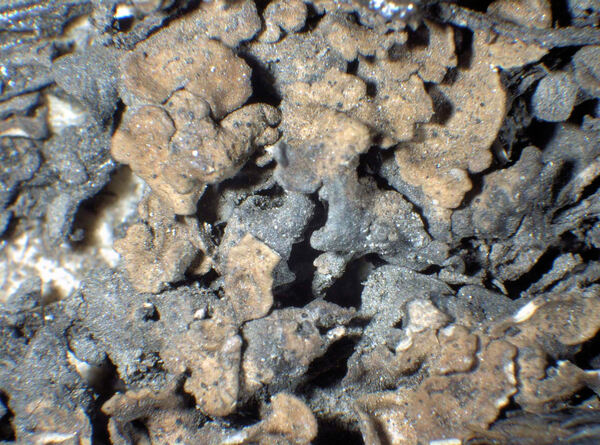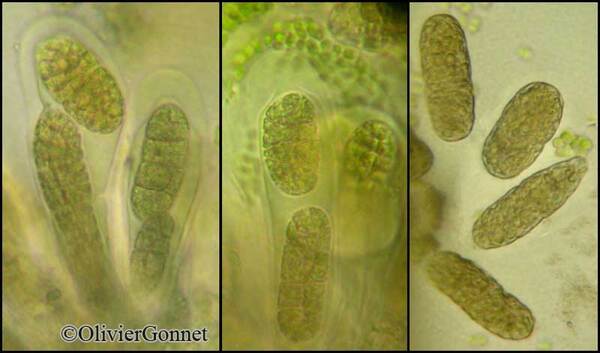Endocarpon adscendens (Anzi) Müll. Arg.
Bull. Trav. Soc. Murith. Valais, 10: 58, 1881. Basionym: Dermatocarpon pusillum var. adscendens Anzi - Cat. Lich. Sondr.: 103, 1860.
Synonyms: Endocarpon pallidum auct. p.p. non Ach.
Distribution: N - Frl (TSB 16892), TAA, Lomb, Piem (Morisi & Sereno 1995, Clerc & al. 1999, Isocrono & al. 2003), Emil (Fariselli & al. 2020), Lig. C - Marc (Nimis & Tretiach 1999). S - Camp (Garofalo & al. 2010). Bas (Herb. Ravera 1380), Cal (Puntillo 1996).
Description: Thallus squamulose, heteromerous, rather loosely attached, forming compact mats. Squamules 0.4-1.5 mm, usually convex, smooth, contiguous, ascending, imbricate, more or less lobulate, the peripheral ones often longer and somehow radiating; upper surface brownish grey to pale brown, greenish when wet, matt; lower surface black with a pale marginal zone, attached by dark rhizohyphae. Upper cortex pseudoparenchymatous; medulla white, rather lax. Perithecia half-immersed in the squamules, 0.2-0.4 mm across, the upper part black, projecting around a depressed ostiole, without involucrellum. Exciple dark in upper part, pale in lower part; hamathecium of periphyses, interascal filaments absent; hymenium I+ red, K/I+ blue; hymenial algae spherical to broadly ellipsoid. Asci (1-)2-spored, clavate to cylindrical-clavate, bitunicate, with a fissitunicate dehiscence, thin-walled, the wall non-amyloid. Ascospores muriform, brown, elongate-ellipsoid, (25-)28-50 x (12-)14-22(-24) µm. Pycnidia dark, immersed. Conidia crescent-shaped, 4-6 x 0.8-1 µm. Photobiont chlorococcoid (probably Diplosphaera), present in both thallus and hymenium. Spot tests: cortex and medulla K-, C-, KC-, P-, UV-. Chemistry: without lichen substances.
Note: a mainly temperate, perhaps holarctic lichen found on terricolous mosses or on siliceous rocks, often near and on cyanobacterial colonies in periodically inundated sites, with optimum in upland areas with base-rich siliceous rocks.
Growth form: Squamulose
Substrata: soil, terricolous mosses, and plant debris
Photobiont: green algae other than Trentepohlia
Reproductive strategy: mainly sexual
Commonnes-rarity: (info)
Alpine belt: absent
Subalpine belt: rare
Oromediterranean belt: absent
Montane belt: rather rare
Submediterranean belt: rare
Padanian area: absent
Humid submediterranean belt: rare
Humid mediterranean belt: absent
Dry mediterranean belt: absent
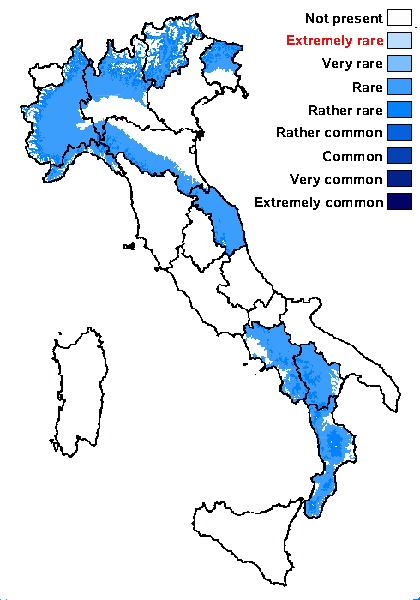
Predictive model
Herbarium samples
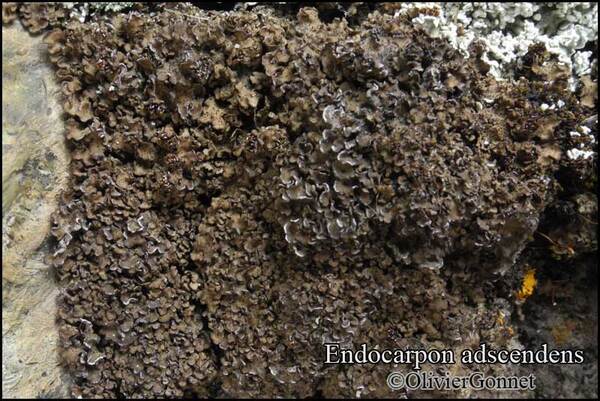
Courtesy Danièle et Olivier Gonnet - Source: https://www.afl-lichenologie.fr/Photos_AFL/Photos_AFL_E/Texte_E/Endocarpon_adscendens.htm
France, Défilé de Lancone - Corse
19/10/2012
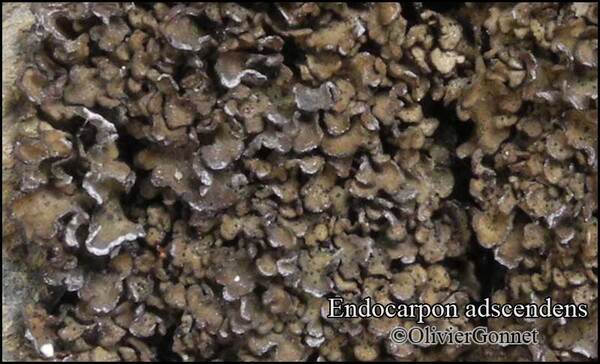
Courtesy Danièle et Olivier Gonnet - Source: https://www.afl-lichenologie.fr/Photos_AFL/Photos_AFL_E/Texte_E/Endocarpon_adscendens.htm
France, Défilé de Lancone - Corse
19/10/2012
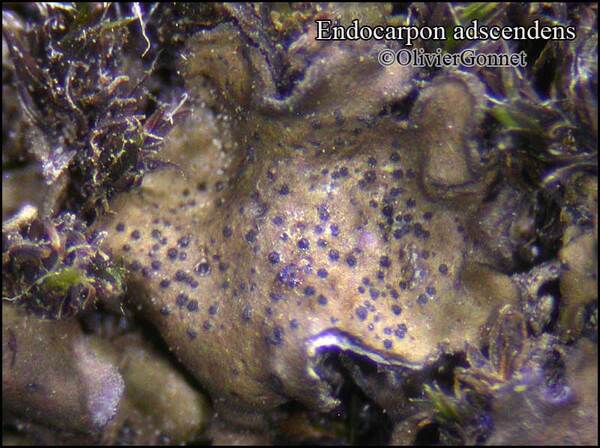
Courtesy Danièle et Olivier Gonnet - Source: https://www.afl-lichenologie.fr/Photos_AFL/Photos_AFL_E/Texte_E/Endocarpon_adscendens.htm
France, Défilé de Lancone - Corse
19/10/2012
Growth form: Squamulose
Substrata: soil, terricolous mosses, and plant debris
Photobiont: green algae other than Trentepohlia
Reproductive strategy: mainly sexual
Commonnes-rarity: (info)
Alpine belt: absent
Subalpine belt: rare
Oromediterranean belt: absent
Montane belt: rather rare
Submediterranean belt: rare
Padanian area: absent
Humid submediterranean belt: rare
Humid mediterranean belt: absent
Dry mediterranean belt: absent

Predictive model
| Herbarium samples |

Courtesy Danièle et Olivier Gonnet - Source: https://www.afl-lichenologie.fr/Photos_AFL/Photos_AFL_E/Texte_E/Endocarpon_adscendens.htm
France, Défilé de Lancone - Corse
19/10/2012

Courtesy Danièle et Olivier Gonnet - Source: https://www.afl-lichenologie.fr/Photos_AFL/Photos_AFL_E/Texte_E/Endocarpon_adscendens.htm
France, Défilé de Lancone - Corse
19/10/2012

 INDEX FUNGORUM
INDEX FUNGORUM
 GBIF
GBIF
 DOLICHENS
DOLICHENS
